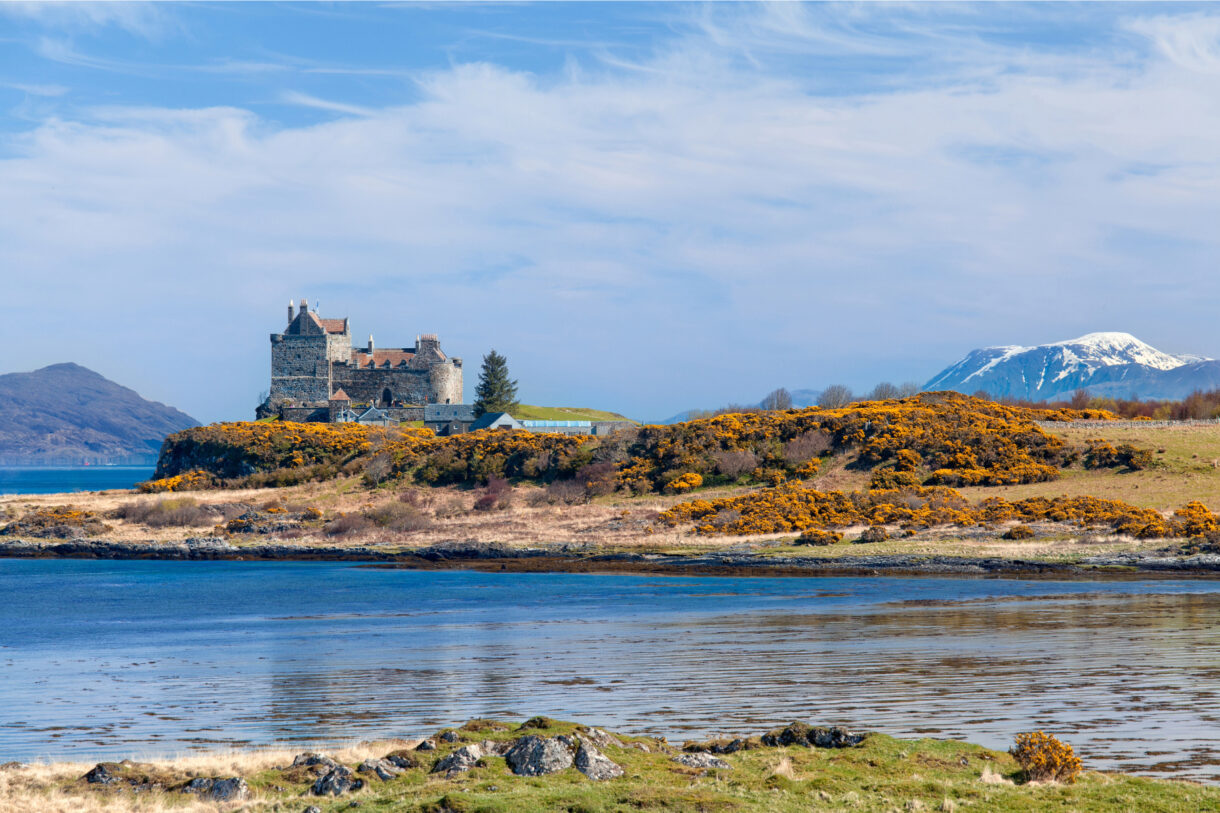
How to Avoid Midges in Scotland: Top Tips & Best Repellents
Planning a trip to Scotland? Beware of midges! These tiny biting insects are notorious for swarming hikers, campers, and anyone exploring Scotland’s beautiful outdoors. From the Scottish Highlands to the West Coast, midges thrive in damp, mild conditions, especially in summer. But don’t worry—this guide will show you exactly how to avoid midges in Scotland, the best midge repellents, and when to check the Scottish Midge Forecast to stay bite-free. Whether you’re camping, hiking, or road-tripping, we’ve got expert tips to help you enjoy Scotland’s stunning landscapes without the itch!
Spring is well and truly here in Scotland. The days are getting longer, the weather warmer, and the rain… well, it’s still wet, but at least it’s milder now. I’m already making plans for all our summer adventures; so far we have plans for camping in the Cairngorms and exploring the gorgeous West Coast. Scotland has so much to offer and we still haven’t seen everything. But summer in Scotland means one thing – Scottish midges!
After five years of living, camping, and adventuring across Scotland, we’re pretty good at combatting the famously annoying Scottish midge. That’s why we’ve written this guide. We’ll help you understand these tiny invaders and equip you with everything you need to know to enjoy Scotland’s incredible nature, midge-free.
Short on time? Here are our quick tips for avoiding midges in Scotland!
Check the Scottish Midge Forecast before your trip
Camp in open, breezy areas
Wear light-colored, long-sleeved clothing
Use a proven midge repellent like Smidge or Avon Skin So Soft
Avoid being outside at dawn and dusk
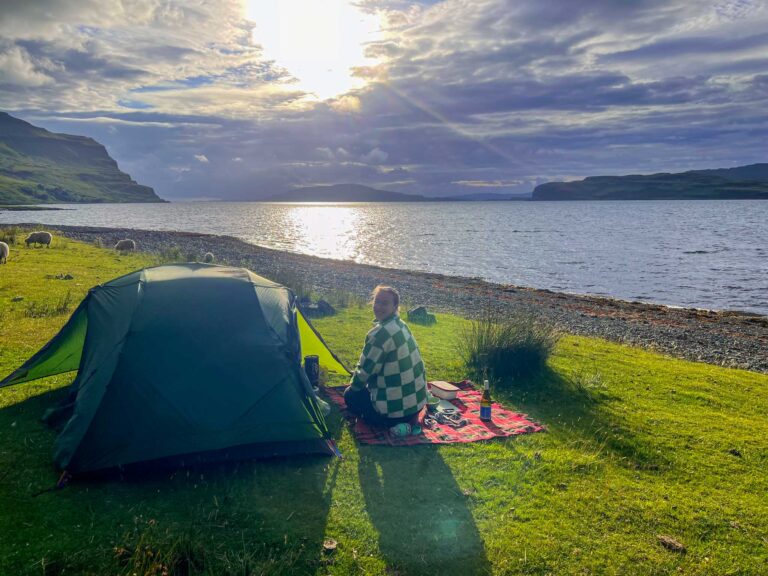
Camping next to freshwater is not a good idea when trying to avoid midges, but camping next to the ocean can be a great idea!
What Are Midges?
Scottish midges are tiny, biting insects. They are pretty small, no more than 3mm long, but they do bite, leaving little itchy red bumps which usually go away after a day or two. Midges are found throughout the UK, but especially in Scotland! Scottish midges are a common nuisance in summer when they swarm in large numbers.
Midges love mild, damp climates. This makes Scotland, with its cool summers, long coastline, boggy peat moors and over 30’000 lochs (!) their dream home. Midges are particularly annoying in the summer months when they swarm in large numbers. Which… unfortunately coincides with the only time of the year it’s warm enough for all of us looking to get outside and enjoy the incredible nature Scotland has to offer!
Planning a trip to Scotland? Check out the following posts:
Why are midges an issue?
Midges are not dangerous. They don’t spread disease in the same way as ticks (which are something else you should keep an eye out for!). But that doesn’t stop them from being really really annoying.
Midges are mostly a pain for the following three reasons:
- Midges are so tiny you won’t feel them on you until after they bite
- They don’t make any noise, so unlike mosquitos, you won’t hear them approach
- They travel in huge clouds or swarms
Although small, midge bites can be very irritating. But the real reason that makes these flies so annoying is that midges travel in swarms. And they have antennae receptors to detect the carbon dioxide released when we breathe. So the moment you stop to take a breather on a hike, pitch your tent, or step outside to cook your meal, clouds of midges will descend. They’ll be all over any bare skin, especially your face and in your hair. They’re small and there’s a lot of them, which is enough to drive anyone crazy.
Midges can turn a fun trip into a nightmare that has you hiding in your tent or waiting hours to leave your car. But don’t worry, we’re going to show you how to avoid them and how to protect yourself.
When is Midge Season in Scotland
Midge season in Scotland typically runs from late spring to early autumn, with the peak activity occurring between June and August. So, basically any time it’s warm enough to feasibly camp outside in Scotland, it’s probably midge season. Lucky us!
These insects are most active during warm, damp conditions, often in the early morning and late evening. Their numbers can be overwhelming during peak season, especially in the Western Highlands and Islands which are notoriously bad. Keep reading, we’ll take you through our favourite tips and tricks to avoid midges in Scotland.
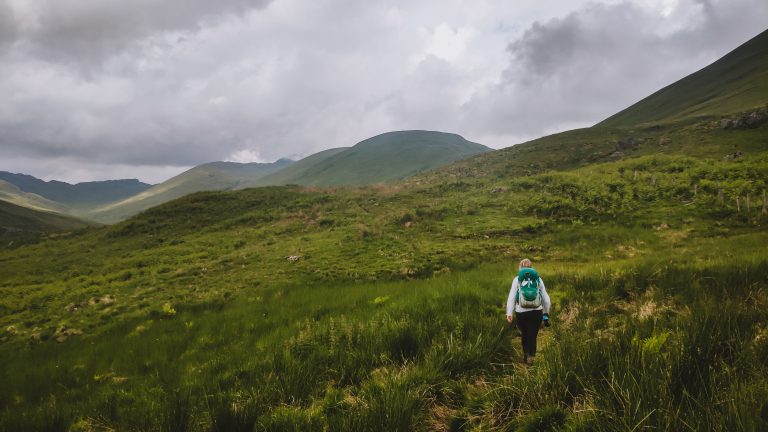
How to get rid of midges
Unfortunately, there’s no way around it. If you’re in Scotland in the summer, there’ll be midges. So how do you avoid midges in Scotland?
Getting rid of midges can be tricky since they thrive in damp, sheltered environments, but there are ways to keep them at bay. The best method is prevention, using our tips below.
If midges are already swarming, you can disperse them with smoke from a campfire or citronella candles. If you’re in a tent, make sure the mesh is zipped up tightly before dusk. For outdoor spaces, midge traps that emit CO₂ can lure them away, though they work best in confined areas.
Top Tips to Avoid Midges
#1 PLAN AHEAD
If you’re planning a trip to Scotland in the summer, keep one step ahead by tracking the Scottish Midge Forecast. The Scottish Midge Forecast combines midge population data with the weather forecast to predict midge levels across Scotland throughout the season. They rank the midge level from 1 (almost none) to 5 (swarms, avoid at all costs).
In my experience, anything more than a ‘3’ is going to be incredibly annoying! A ‘5’ would see me waiting until they’ve gone to leave my tent or car.
#2 PICK A GOOD CAMPING SPOT
Midges love damp, sheltered areas like woodlands, peat bogs, and lakesides. If you’re hiking or camping, opt to camp at higher altitudes and open areas where the breeze helps keep them at bay. Avoid pitching your tent right next to a freshwater loch or bog – no matter how amazing the views seem, I promise you it’s not worth it once the midges come out!
You can also avoid pitching your tent or cooking outside at dawn and dusk. These are the times that midges are most active, so it makes basic camp admin a proper nightmare. Be prepared, so that once the sun disappears and they start to swarm, you can jump in your tent and zip up the mesh netting.
#3 COVER UP WITH PROTECTIVE CLOTHING
You’ll want to wear long-sleeved shirts and long trousers, especially in the mornings and evenings. Luckily for you, Scotland doesn’t get that warm, so you might not be cracking out the shorts and t-shirts anyway. Midges are attracted to dark colours, so opt for lighter clothing if you can.
You can also use physical barriers. Although incredibly un-sexy, a midge net can be a lifesaver when camping, especially if you have to be outside. My favourite combination is a midge net over a bucket hat.
#4 USE INSECT REPELLANT
Once you’ve covered up as best as you can, apply one of the following midge repellants on any still-exposed skin to stay midge-free all day!
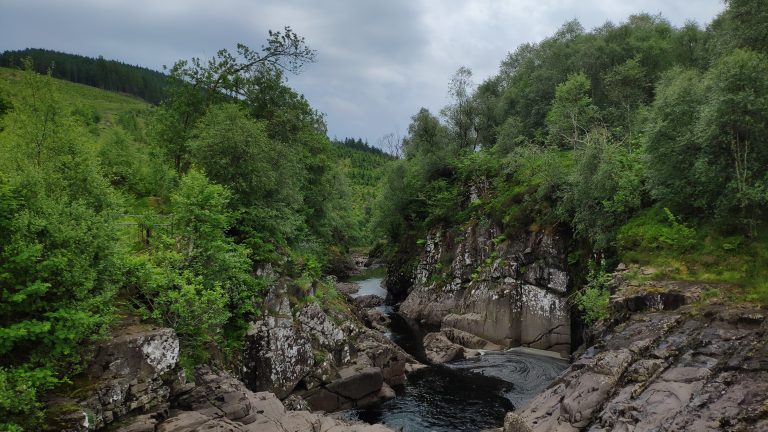
Our top three insect repellants to avoid midges in Scotland
1.
Avon Skin So Soft: This was created as a dry oil moisturiser, not a designated midge repellent. But so many people in Scotland will swear by it, including us! It’s scented with citronella and it stops the midges from being able to grip to your skin or bite through the oil. It’s pretty cheap, one bottle lasts for ages. Plus, it’s non-toxic and smells really good.
2.
Smidge: Developed in Scotland by biting-midge experts, Smidge effectively blocks the antennal receptors of midges, which means they can’t find you to bite you. It also works on mosquitos and ticks, so it’s a great all-round insect repellant. It’s comparable to DEET-based products, but smells better and is less toxic
3.
DEET-Based Repellents: DEET is a well-known and effective ingredient in many insect repellents. Look for products with a concentration of at least 30% for maximum protection. The ‘Jungle Fever’ brand is my go-to repellant for any tropical countries, especially where insect-borne illnesses are a risk. But it works for Scottish midges too!
That’s all from me! Don’t let the midges get you down and make the most of your adventures in Scotland! Have you faced the wrath of Scottish midges? Share your experience and best tips in the comments. We’d love to hear from you.
Happy midge-free travels!
If my content helped you plan your next adventure, taught you something new, or simply made you smile, consider supporting the site! A small donation helps keep this blog going, fuels my creativity, and maybe even buys me a coffee along the way. Thank you for being here and being part of this journey! 😊
FAQs
What are midges?
Scroll up, bestie! We’ve already answered this one. Midges are tiny, flying insects commonly found in damp, rural areas. In Scotland, the most infamous species is the Highland midge.
Do midges bite?
Yes, female midges bite to feed on blood, which they need to produce eggs. Their bites can cause itching and irritation, especially if you’re exposed to a swarm. Males, however, do not bite.
Can midges bite through clothing?
Midges struggle to bite through thick fabrics, but they can get through thin, tight-fitting clothing like leggings or t-shirts. Wearing loose, long-sleeved clothing and treating clothes with insect repellent can help keep them at bay.
How to deal with midges in Scotland?
Avoid being out at dawn and dusk, when midges are most active. Wear long, loose clothing, use a good midge repellent, and consider a midge net for your face in bad conditions. Staying in breezy areas or using a midge trap can also help.
What is the difference between mosquitoes and midges?
Midges are much smaller than mosquitoes and tend to swarm in large numbers, while mosquitoes are larger and usually bite individually. Mosquito bites often cause more swelling and irritation, and some species can transmit diseases, whereas midges in Scotland are just an itchy nuisance.
LIKE IT? PIN IT!
SAVE THIS POST TO YOUR PINTEREST BOARD TO COME BACK LATER
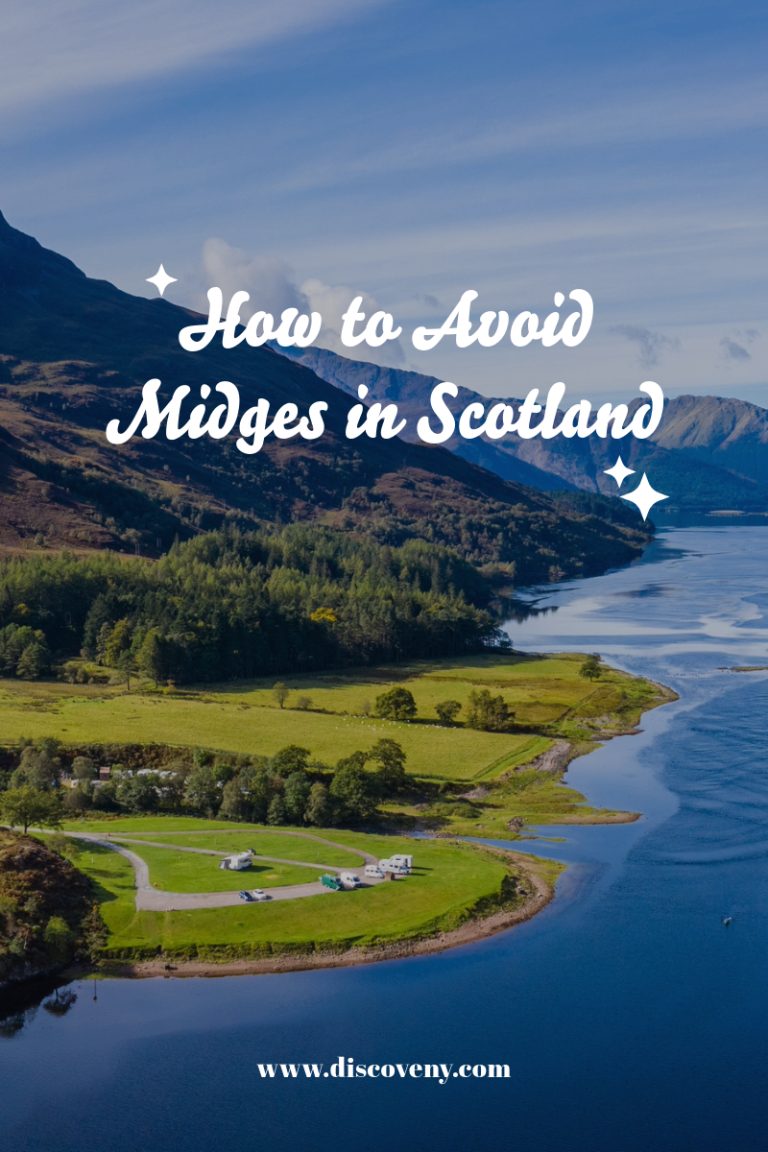
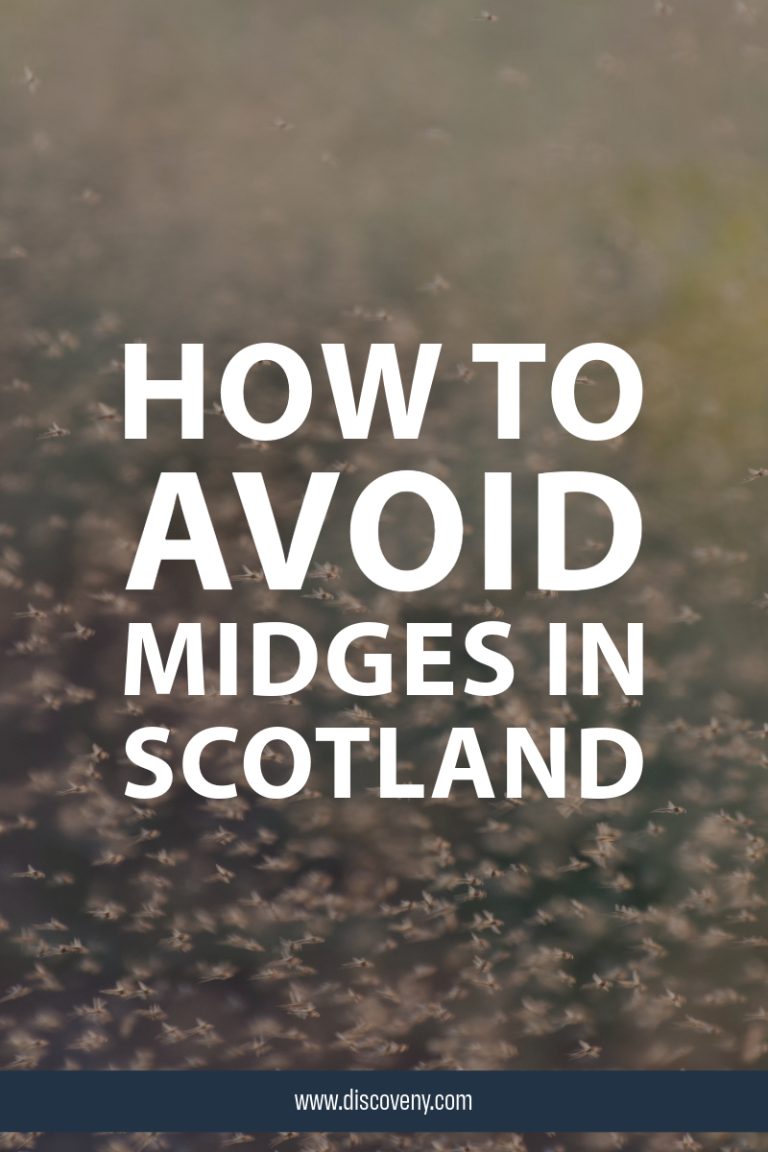
Follow our daily adventures on Facebook and Instagram
Disclaimer: The information and advice provided in this blog are the author’s opinions and based on their personal experiences. All information was accurate at the time of writing. However, things can change quickly, so always double-check current conditions and guidelines before setting out. Remember, your travels and safety are your own responsibility, and this blog can not be held responsible for anything that might happen on your adventures! Always exercise caution and good judgment. Oh, and don’t forget to get travel insurance! Happy travels!
This post may contain affiliate links (yay for transparency!) This means that I will earn a small commission, at no additional cost to you, if you click the link and choose to buy the product. I only link to stuff I have personally bought and found useful and never endorse crap. Your support helps keep the site going, thank you!
Alice
Alice is a UK travel blogger who advocates sustainable travel and being more eco-conscious on a budget. She loves coffee, her houseplants and summiting mountains.
You May Also Like
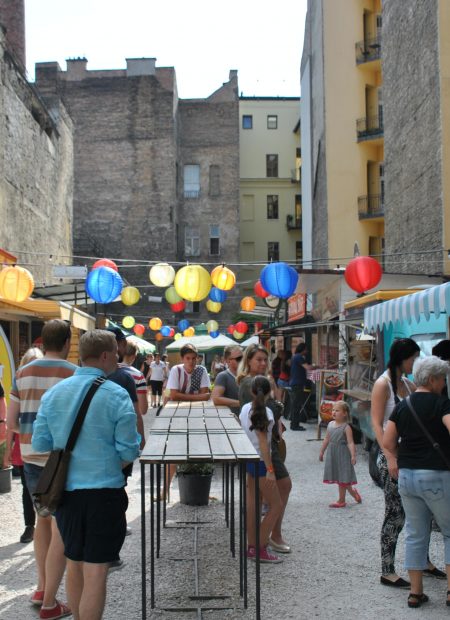
Hungry in Hungary: Your 2023 Guide to Veg-Friendly Hungarian Cuisine
January 7, 2023
Is Diving in Silfra worth the money? Everything you need to know [2024]
May 18, 2024
